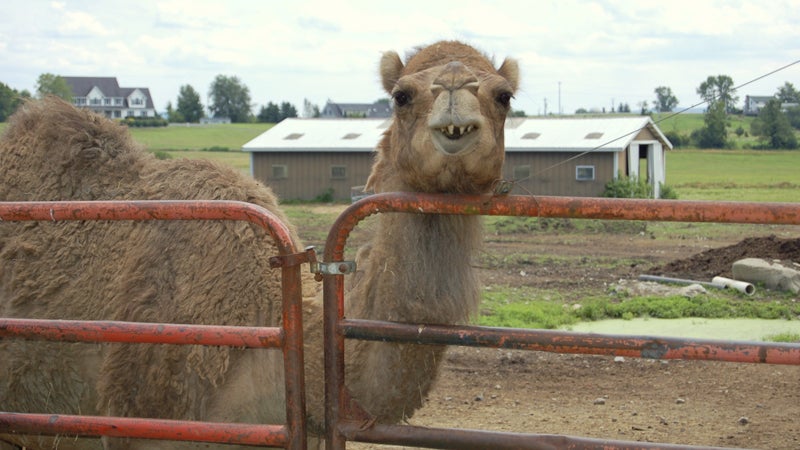Camel milk recently became the foundation of , but in the eyes of a few Midwestern and mid-Atlantic farmers, this low-cholesterol, high-protein product has .
Although lower in vitamins A and B2 and higher in fatty acids than cow milk, camel milk offers 10 times as much iron, three times as much vitamin C, and wins by a mile in the mineral department. What makes it a strong makeup component—hardy antibody proteins—is also attractive to food producers.
Several farms in states such as Indiana, North Carolina, Ohio, and Pennsylvania are interrupting the region’s steady networks of dairy farms to raise about 5,000 single-humped dromedaries and double-humped Bactrians, the world’s most successful camel species. These vanguards are wellness- and organic-focused, and occasionally even Amish—they’re all looking for the most natural way to boost our bodies’ immunities and energy levels.
“Epigenetics suggest that we can actually change our genes by how we live. Right now in modern society, we are like polar bears released into a Death Valley environment,” said Frank King, a North Carolina–based naturopathic doctor and farm owner, in an interview with USA Today. “When people connect with nature, they feel better, and wild is better.”
Camel milking on these farms is calmer and in staunch contrast to the mechanized practices of Big Ag. King’s 23 camels, for instance, wander his farm until a farmer needs to milk them by hand (“You can milk standing up,” King adds), in which case a baby is placed with its mother to get about two gallons of milk flowing naturally. Unfortunately for U.S. farmers, they can’t sell the milk in an entirely natural state; King flash pasteurizes his milk because federal law requires this of milk sold across state lines. The Food and Drug Administration approved camel milk for commercial sale in 2009, but standards testing is ongoing.
As promising as the dromedary dairy explosion seems, camel milking is . King is researching the potential of at least four other ungulate species—African Watusi, white buffalo, bison, and Himalayan yak—through his Wild Food Foundation nonprofit.
Although camel milk might be just taking off outside of the Middle East, the FAO estimates that the market that welcomes farmers of all kinds. But that market could be a niche one—camels don’t produce much milk, and farmers expect they could charge .


